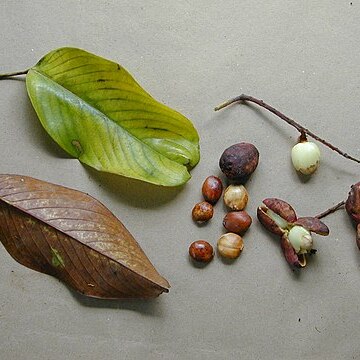A tree. It grows 30 m tall. The bark is smooth and brown. The leaves are simple and alternate. They are in spirals or clustered at the ends of twigs. The leaf stalks are 3-5 cm long and swollen at the ends. The leaf blade is 10-18 cm long by 5-9 cm wide. They are narrowly oval and taper to a short tip. The flowers are in panicles at the ends of branches. They are small and white. The fruit is a red capsule with 2 lobes. There is one seed in each lobe.

